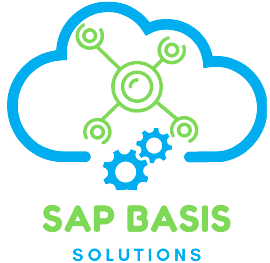Although the general consensus of migrating SAP to the cloud provides many benefits, but it’s not without challenges. The process can be difficult for IT departments to plan and execute a successful migration. To prepare for the migration, your company should know the potential risks and how they can be mitigated. SAP migration service providers can help you make an informed decision about whether or not it is suitable for your business to migrate SAP to the cloud.
In this blog, we’ll discuss the top benefits as well as challenges faced in SAP cloud migration service.
Top benefits that come with an SAP migration to the cloud
Scalability
SAP requires several servers to run, including application servers, a data interface and electronic data interchange server, and a database engine. Over a time, these servers may require changes to accommodate the increases in data requirements and users. Unlike, the traditional practice of adding hardware to deliver the additional resources, SAP providers help you to use the flexibility the cloud provides two quickly provision additional servers, storage and processing power by just logging into the cloud portal.
Test environments
In some of the large implementations of SAP, companies may implement custom code and other customizations to gain some specific functionality which results in the need for a secondary environment for development and testing purposes. But, the migration to cloud can provide a quick and cost-efficient way to deploy testing systems helping to mitigate the costs of duplicating all the hardware and software needed for periodic testing.
Security and Compliance
The growing threat of cyber-attacks concerns many companies in losing their data. To overcome this CIOs and chief information security officers finds it valuable to put their systems in the cloud to take advantage of the providers’ SAP security services. Organizations can also take up additional security from their providers that use advanced machine learning, behavioral analytics and application-based intelligence to detect threats. An SAP migration to the cloud can help eliminate complexity and resources needed for ongoing audits by managing an on-premises data center.
Challenges faced
Adaptability
One of the major challenges faced in cloud migration is adaptability. It is common within the team whenever a change happens. Therefore, efforts to adapt and adjust to the cloud platform are essential.
Cost
The organization may find it difficult to reduce its upfront capital investment in IT equipment and hardware. Mismanagement and if the organization does not monitor, the shift to a subscription model can quickly get out of control leading to additional expenses for systems that are not being used.
Downtime
Organizations in rural areas may face some connectivity issues from time to time without themselves accessing to SAP when their internet provider is down. This can increase the risks of more downtime, whereas an on-premises environment would not have similar issues.
Conclusion
Despite the concerns around the adoption of cloud services to host SAP, a business can reap the benefits of scalability, data protection, disaster recovery and much more. To start, engage with our team of professionals to get some training to do an SAP migration to the cloud.
